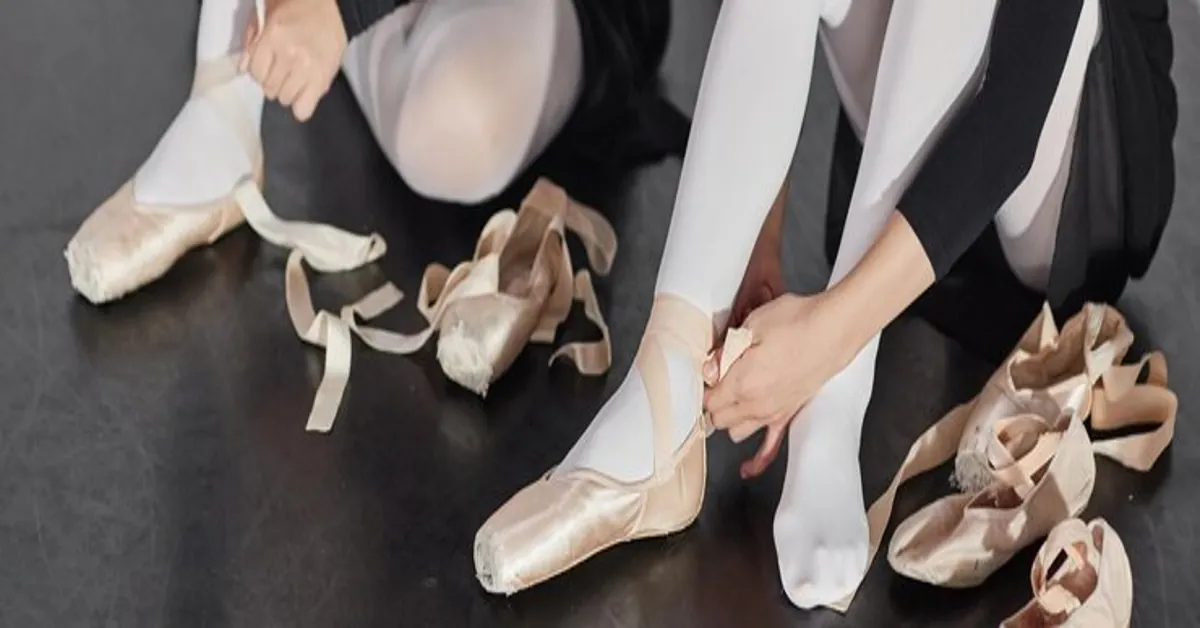Whether you’re stepping into a dance studio for the first time or preparing for a professional performance, the right ballet shoes are a must-have. These delicate-looking yet highly functional shoes are an essential tool for dancers to perform with grace, control, and support.
In this in-depth guide, we’ll walk you through everything you need to know about ballet shoes—from types and fit to materials and brands—so you can make the best decision for your dance journey.
What Are Ballet Shoes?
Ballet shoes (also called ballet slippers) are lightweight, flexible shoes worn by dancers during classes and performances. They allow the feet to move naturally, provide subtle grip, and emphasize the dancer’s footwork and lines.
Key characteristics:
- Soft and flexible
- Low-cut vamp
- Thin soles for tactile feedback
- Designed for movement and aesthetics
They are distinct from pointe shoes, which are structured for advanced dancers who perform en pointe (on the tips of their toes).
Types of Ballet Shoes
1. Full Sole Ballet Shoes
These have a continuous sole from toe to heel. Ideal for beginners, they help:
- Build foot strength
- Improve alignment
- Provide solid support
Often recommended for young dancers, full sole ballet shoes are excellent for learning proper technique.
2. Split Sole Ballet Shoes
Split sole shoes have two separate pads on the heel and ball of the foot, offering more flexibility.
Benefits include:
- Better arch visibility
- Increased mobility
- More professional look
These are favored by intermediate to advanced dancers who have developed sufficient foot control.
3. Pointe Shoes
Pointe shoes are a specific type of ballet footwear that allow dancers to perform on the tips of their toes.
Important features:
- A hard toe box (the “block”)
- A rigid shank for support
- Ribbons and elastic for secure fit
Note: Pointe work requires proper training and strength, typically not introduced until a dancer is at least 11-13 years old and has sufficient ankle strength.
Ballet Shoe Materials Explained
The three most common materials used in ballet shoes are:
Leather
- Durable and strong
- Excellent for young or beginner dancers
- Offers good resistance to help develop strength
Canvas
- Lightweight and breathable
- Molds to the foot over time
- Ideal for indoor use and frequent classes
Satin
- Typically used for performances
- Not as durable for daily practice
- Offers elegant aesthetic for stage presence
Each material has its pros and cons depending on the use case and dancer level.
How to Choose the Right Ballet Shoes
Choosing ballet shoes depends on several factors:
Consider your experience level
- Beginners: Full sole, leather shoes
- Intermediate: Canvas, split sole
- Advanced: Split sole or pointe shoes (with training)
Foot shape
- High arches benefit from split soles that highlight foot lines
- Wide feet may prefer canvas due to stretchability
Dance goals
- Practice vs. performance
- Daily classes vs. auditions or recitals
Always consult with your dance teacher for specific guidance, especially when transitioning to pointe shoes.
Proper Fit: How Should Ballet Shoes Feel?
A good fit is essential for both safety and performance. Here’s what to look for:
Ballet Shoe Fit Checklist:
- Snug but not tight
- No extra fabric bunching at the toes
- Heels should not slip off when pointing or flexing
- Toes should lie flat inside the shoe
- Elastic and/or ribbons should hold the shoe securely
Common Fit Mistakes:
- Shoes too large cause instability
- Too tight shoes may restrict blood flow or cause injuries
Ballet shoes are typically worn without socks to allow better grip and feel.
How to Care for Ballet Shoes
Caring for your shoes extends their life and keeps them performance-ready.
Ballet Shoe Maintenance Tips:
- Air dry after each use (especially canvas and leather)
- Store in a breathable mesh bag
- Avoid machine washing (spot clean instead)
- Use a soft brush to remove debris from soles
- Replace elastic or ribbons when they stretch out
For satin shoes, consider using protective toe caps or cover them during rehearsals to preserve their condition for performances.
Best Ballet Shoe Brands for Beginners and Pros
Here’s a quick comparison of top brands in the ballet world:
| Brand | Best For | Material Options | Notable Models |
|---|---|---|---|
| Bloch | Beginners + Pro | Leather, Canvas | Pro Elastic, Zenith |
| Capezio | All Levels | Canvas, Leather | Hanami, Juliet |
| Sansha | Beginners | Canvas | Pro 1C, Recital |
| Grishko | Advanced | Satin, Canvas | 2007 Pointe, Novice |
| Freed of London | Professionals | Satin, Leather | Classic Pointe |
These brands are known for their quality craftsmanship and are widely available online and in dancewear stores.
Common Ballet Shoe Mistakes to Avoid
- Wearing shoes that are too loose or too tight
- Skipping teacher consultations before pointe work
- Using performance shoes in class
- Not breaking in new shoes gradually
- Neglecting proper hygiene and storage
Making the right ballet shoe choices contributes to both technique development and injury prevention.
Where to Buy Ballet Shoes
You can purchase ballet shoes from:
Local Dancewear Stores
- Personalized fittings
- Try-on options
- Expert staff advice
Online Retailers
- Capezio, Discount Dance, and Bloch official sites
- Amazon and Zappos (read reviews and sizing guides)
- Second-hand or consignment platforms for pointe shoes
Always check return policies, especially when ordering online for the first time.
Conclusion
Ballet shoes are more than just part of a dancer’s wardrobe—they’re a critical part of performance, technique, and safety. From beginners learning their first plié to seasoned professionals perfecting their en pointe, choosing the right ballet shoes can elevate your dance experience.
Whether you’re selecting your first pair or upgrading to professional-grade shoes, remember that fit, material, and purpose matter most. Consult with your teacher, try on multiple options, and keep your goals in mind.
FAQs
1. What are ballet shoes used for?
Ballet shoes are used by dancers during classes and performances to allow for flexible movement, control, and proper foot articulation.
2. How do I know what size ballet shoes to buy?
Ballet shoe sizing varies by brand. It’s best to get professionally fitted or refer to specific brand sizing charts.
3. Are canvas or leather ballet shoes better?
Canvas is lighter and more breathable, great for advanced dancers. Leather is durable and ideal for beginners needing foot support.
4. How long do ballet shoes last?
For regular classes, ballet shoes may last 3-6 months. Pointe shoes wear out faster and may only last a few weeks depending on use.
5. Can you wash ballet shoes?
Canvas ballet shoes can be spot cleaned or gently hand-washed. Leather and satin should only be cleaned with appropriate products.
📣 Call-to-Action (CTA)
Ready to take your next step in ballet?
✨ Find the perfect pair of ballet shoes tailored to your needs.
Subscribe to our newsletter for dancewear reviews, technique tips, and performance inspiration delivered weekly!









